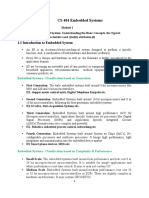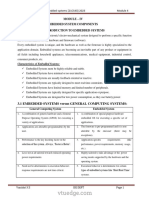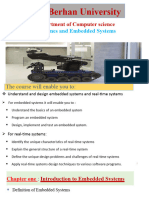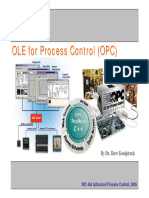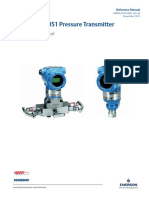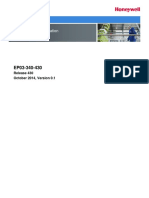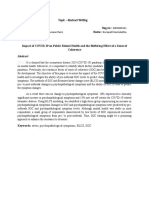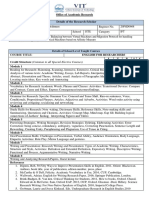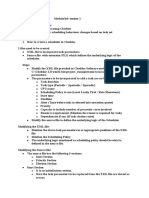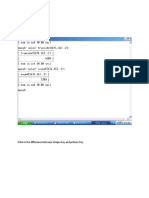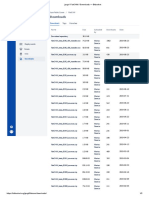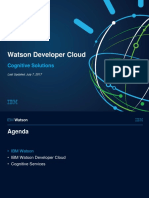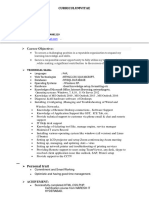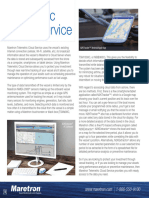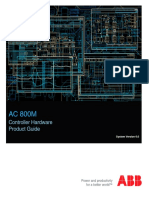0% found this document useful (0 votes)
108 views70 pagesEmbedded and Real-Time Operating Systems: Course Code: 70439
The document outlines a course on embedded and real-time operating systems, including prerequisites, learning objectives, course outcomes, module descriptions, textbooks, and an introduction to embedded systems that defines them, compares them to general computing systems, and classifies them based on generation, complexity and performance, and triggering. The document provides an overview of the course content which covers topics such as embedded system architectures, communication protocols, real-time scheduling, and software development for real-time applications.
Uploaded by
SrikanthCopyright
© © All Rights Reserved
We take content rights seriously. If you suspect this is your content, claim it here.
Available Formats
Download as PPTX, PDF, TXT or read online on Scribd
0% found this document useful (0 votes)
108 views70 pagesEmbedded and Real-Time Operating Systems: Course Code: 70439
The document outlines a course on embedded and real-time operating systems, including prerequisites, learning objectives, course outcomes, module descriptions, textbooks, and an introduction to embedded systems that defines them, compares them to general computing systems, and classifies them based on generation, complexity and performance, and triggering. The document provides an overview of the course content which covers topics such as embedded system architectures, communication protocols, real-time scheduling, and software development for real-time applications.
Uploaded by
SrikanthCopyright
© © All Rights Reserved
We take content rights seriously. If you suspect this is your content, claim it here.
Available Formats
Download as PPTX, PDF, TXT or read online on Scribd
/ 70










